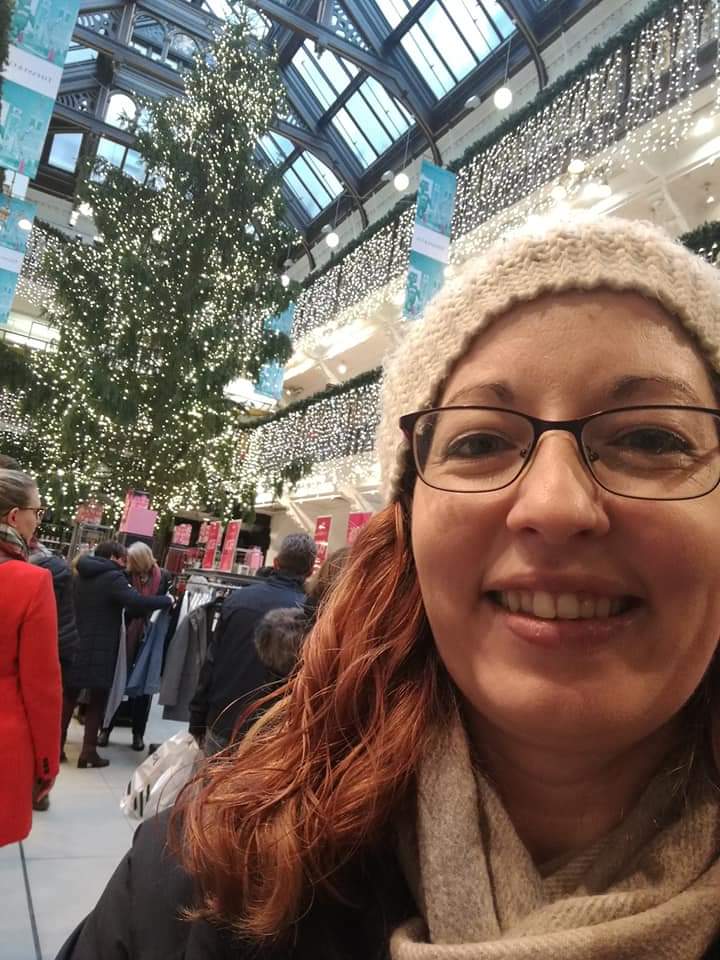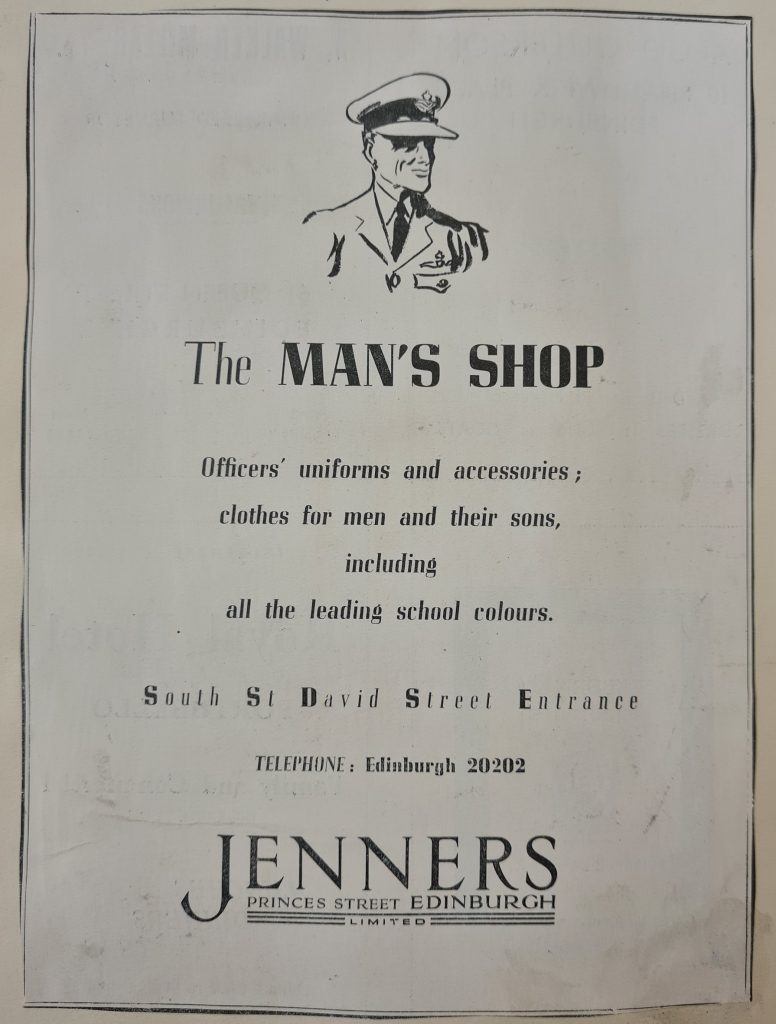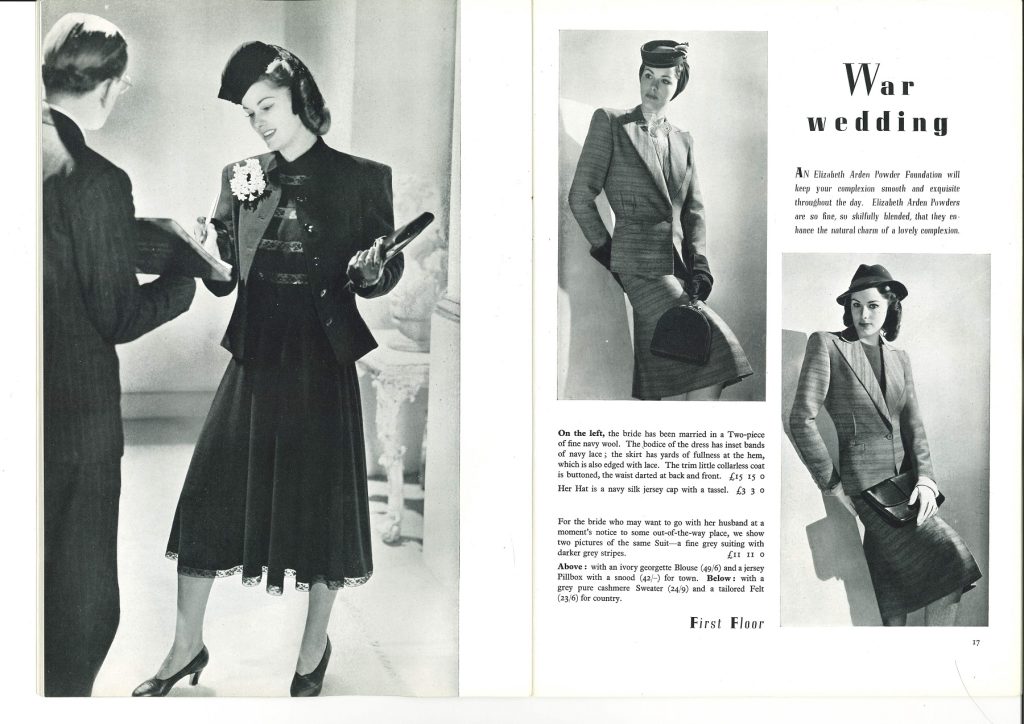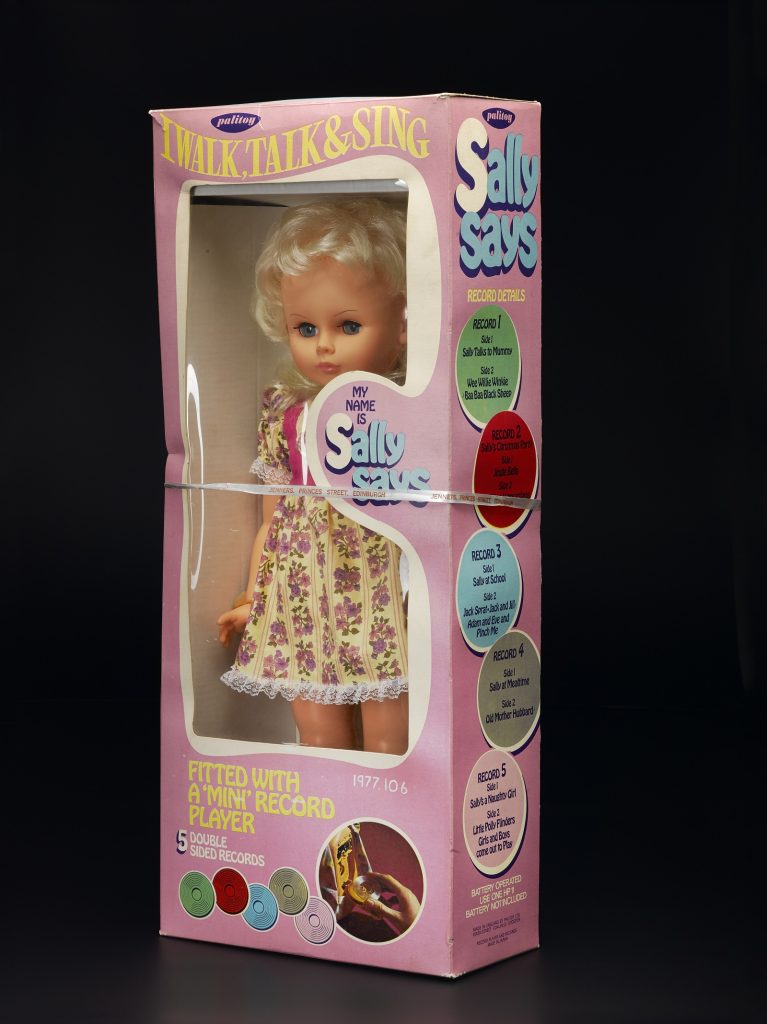With the approach of Christmas and festive shopping reaching a frenzy, this is the perfect time to revisit the history of an Edinburgh icon – Jenners department store. At National Museums Scotland we hold the Jenners Archive along with several objects from Jenners that have entered the museum’s collection. Join Julie Holder, Assistant Curator of Modern and Contemporary Scottish History & Archaeology, as she tells the Jenners story through our objects and archives.

If you live near Edinburgh, you probably have a photo of the Jenners’ Christmas tree somewhere on your phone or social media posts. The last one I took was in December 2018, with a visit to Jenners being a traditional part of the run up to Christmas for my family.
Jenners used to be Scotland’s oldest independent department store. The business was sold by the Douglas-Miller family to House of Fraser in 2005 and the building was bought by fashion retailer Anders Holch Povlsen in 2017. Then in 2021, the announcement was made that Jenners was closing its doors for good. However, like many times in its history, Jenners is making a comeback, with plans to repurpose the site as a boutique hotel, restaurant and department store.

In the beginning…
In 1838, “Kennington and Jenner” was opened by drapers Charles Kennington and Charles Jenner. Their first advertisement declared that their establishment would contain ‘every prevailing BRITISH and PARISIAN FASHION.’

The store’s name changed to “Charles Jenner and Co” in 1863 after the death of Charles Kennington and quickly expanded from a small drapery shop to a major department store.
However, in November 1892 disaster struck. A fire that started in the popular Christmas bazaar in the store’s basement destroyed the building. Within five weeks the Jenners factory in Rose Street was adapted into a temporary store and most of the staff were back at work. Construction began on the current “Jenners” building on Princes Street that has become a familiar part of the Edinburgh skyline.


The new building, opened in 1895, was designed by Scottish architect William Hamilton Beattie and inspired by the architecture of the Bodleian Library in Oxford. With its lofty grand gallery, writing room, and a luncheon and tearoom, the new store was presented as a full leisure experience. Shoppers could spend a whole day browsing, socialising and shopping in what many would call the “Harrods of the North”.

This was a high-end store that aimed to provide the personal touch, with well-turned out shop assistants, porters to turn carpet squares for customers, and even three commissionaires who opened doors and summoned taxis. The business later added modern extensions during the 20th century and was visited by Queen Elizabeth II for its 150-year anniversary in 1988.
A day at the shops
The stereotype of mainly women working and shopping in department stores developed during their heyday of the 19th and 20th centuries. But although shops provided new employment opportunities for women, including as ‘shop girls’, male staff outnumbered women in retail until well after the First World War. Even then, men generally held well-paid managerial positions, while women were often on seasonal or low-paid contracts.

Jenners did have departments aimed at men but its marketing targeted women as key customers, as can be seen from images in their catalogues. Indeed, one of the reasons that Charles Jenner chose caryatids for the outside of the Jenners building in 1893 was to pay homage to the importance of women shoppers to the store’s success.

In the museum’s collection we have a delicate 19th century needlework box that was one of the early types of objects aimed at female clientele. A young Queen Victoria is depicted on the box’s lid in the dress and robes of the Order of the Garter, which she wore at her eldest son’s christening. The needle boxes inside have miniature copies of paintings from the Tarantella Set of 1850 by George Baxter which ‘can be taken off the Lids for Ladies’ Albums’. Creating scrapbooks was a popular pastime for middle and upper-class ladies in the Victorian period. Items like this box link the predominantly female pastimes of sewing and scrapbooking with the important role that women held in managing households in the 19th century.


Weddings, outfits for royal visits, and debutante balls all provided a significant amount of trade for Jenners in its first 100 years. The gowns and headdresses worn when ladies were presented at Holyrood required weeks of fittings and alterations. The recreations of such events in historical TV dramas help us appreciate the pomp and wealth of the wedding season, providing retailers with important income.

However, rationing and changes to British society during and after the Second World War meant that Jenners moved away from its elitist image and aimed to attract a broader range of customers. For example, the brooch pictured above from Jenners was worn by Mrs Florence Bruce Steven on her wedding day in 1940 to go with a modest grey woollen dress and jacket with navy hat, gloves and bag.

Shiny and new!
The “modernity” of the department store has always been part of their marketing, expressed through selling (and using) new technologies. When Jenners reopened in 1895, much was made of the electric lighting and hydraulic lifts, while stores across Britain installed cash registers and elevators. In 1930, the Jenners Radio and Gramophone departments were opened and run by Scottish engineer Alexander Steuart. Meanwhile, many departments in Jenners sold the latest electronic gifts, such as the “Sally Says” doll containing a disc gramophone from the 1970s.


But as much as department stores presented themselves as new and modern, much of what they did expanded on older retail practices, just on a much larger scale! This included selling items at fixed prices, allowing browsing, providing leisure spaces like tearooms, and tempting customers through clever marketing and modern display strategies.
One of the most obvious markers of urban department stores was their monumental architecture, like we see at Jenners. However, the cost of maintaining such large buildings in the age of online shopping has presented challenges. Now, the Jenners building is starting a new chapter. Edinburgh shoppers and those of us with fond memories of Jenners Christmases past are excited to see what happens next!
Christmas reading list
Canmore, Images of the Jenners Building
Mary G. Grierson, A Hundred Years in Princes Street 1838-1938 (Edinburgh: Jenners, 1938)
Sheila McNamara, Jenners A Short History 1838-1988 (Edinburgh: Jenners, 1988)
Geoffrey Crossick and Serge Jaumain (eds), Cathedrals of Consumption: The European Department Store, 1850-1939 (Aldershot: Ashgate, 1999)
